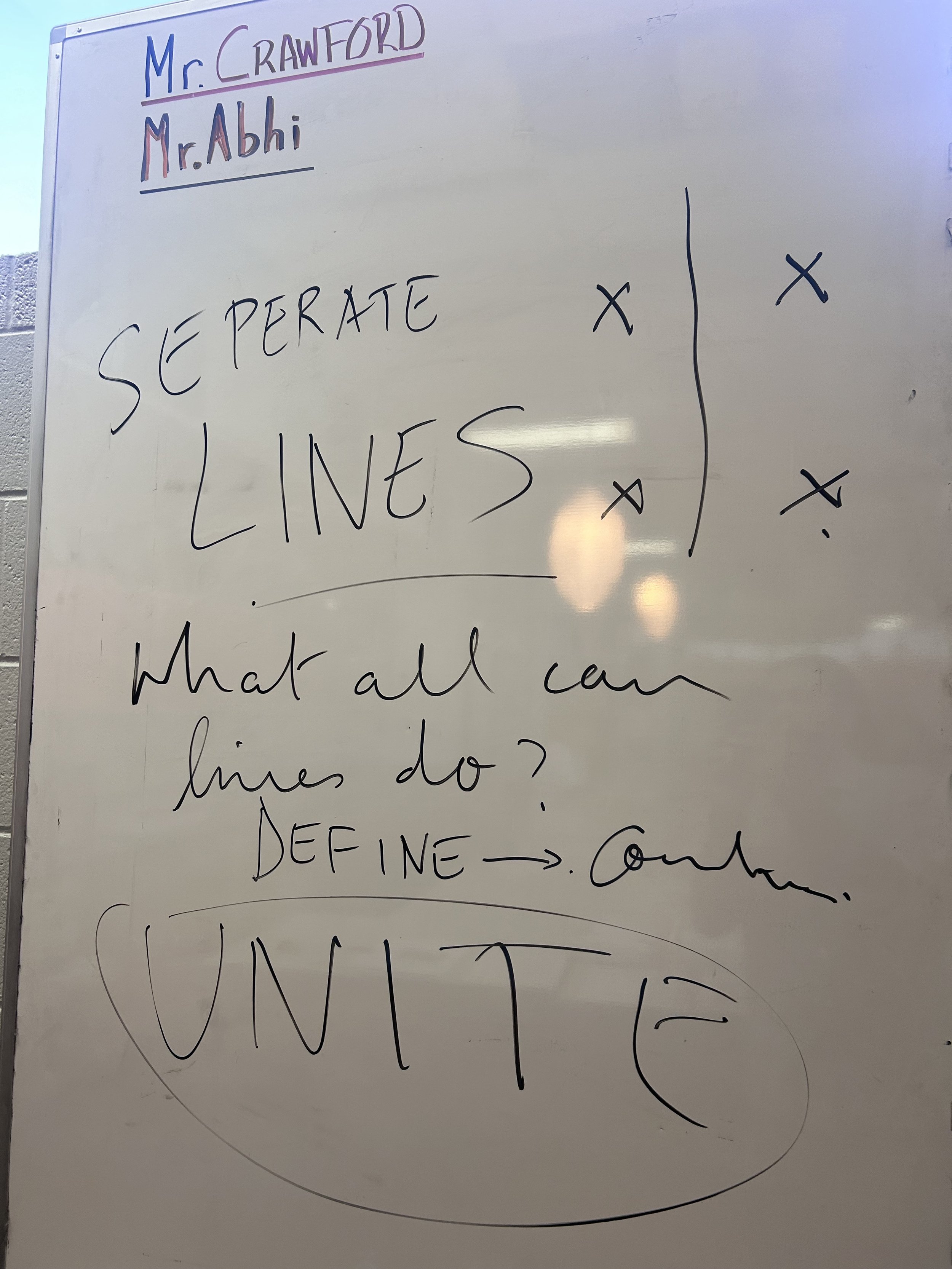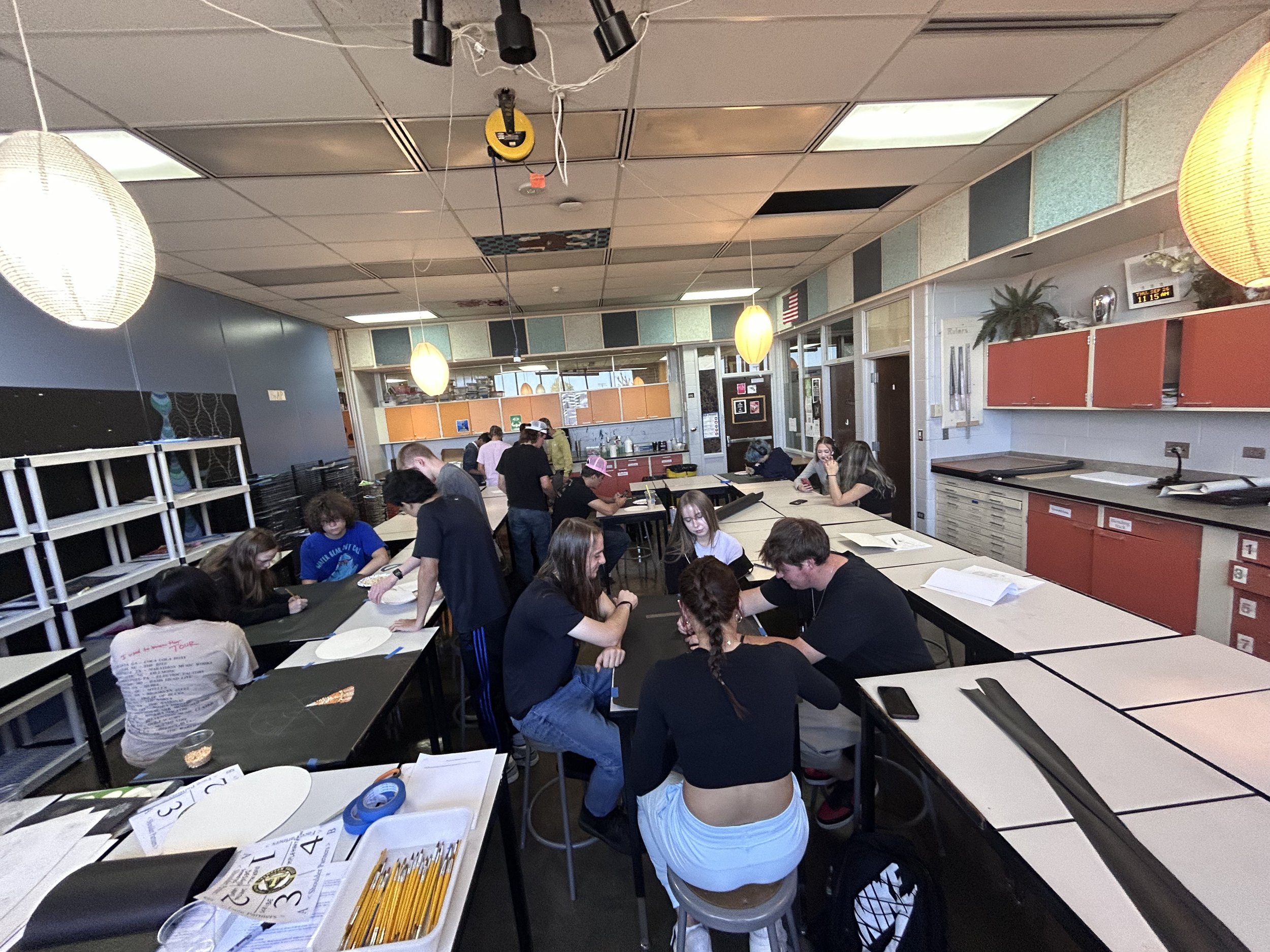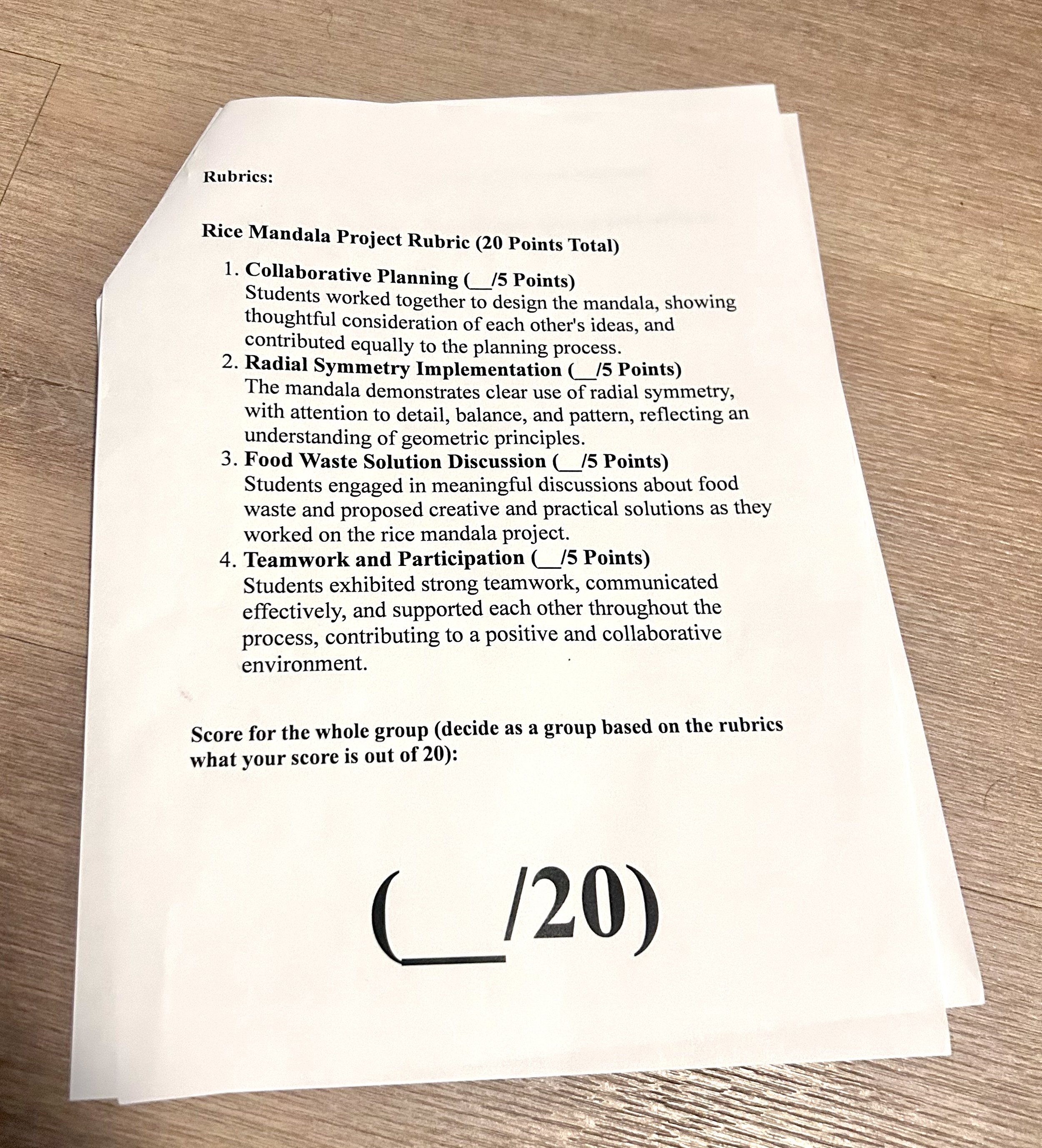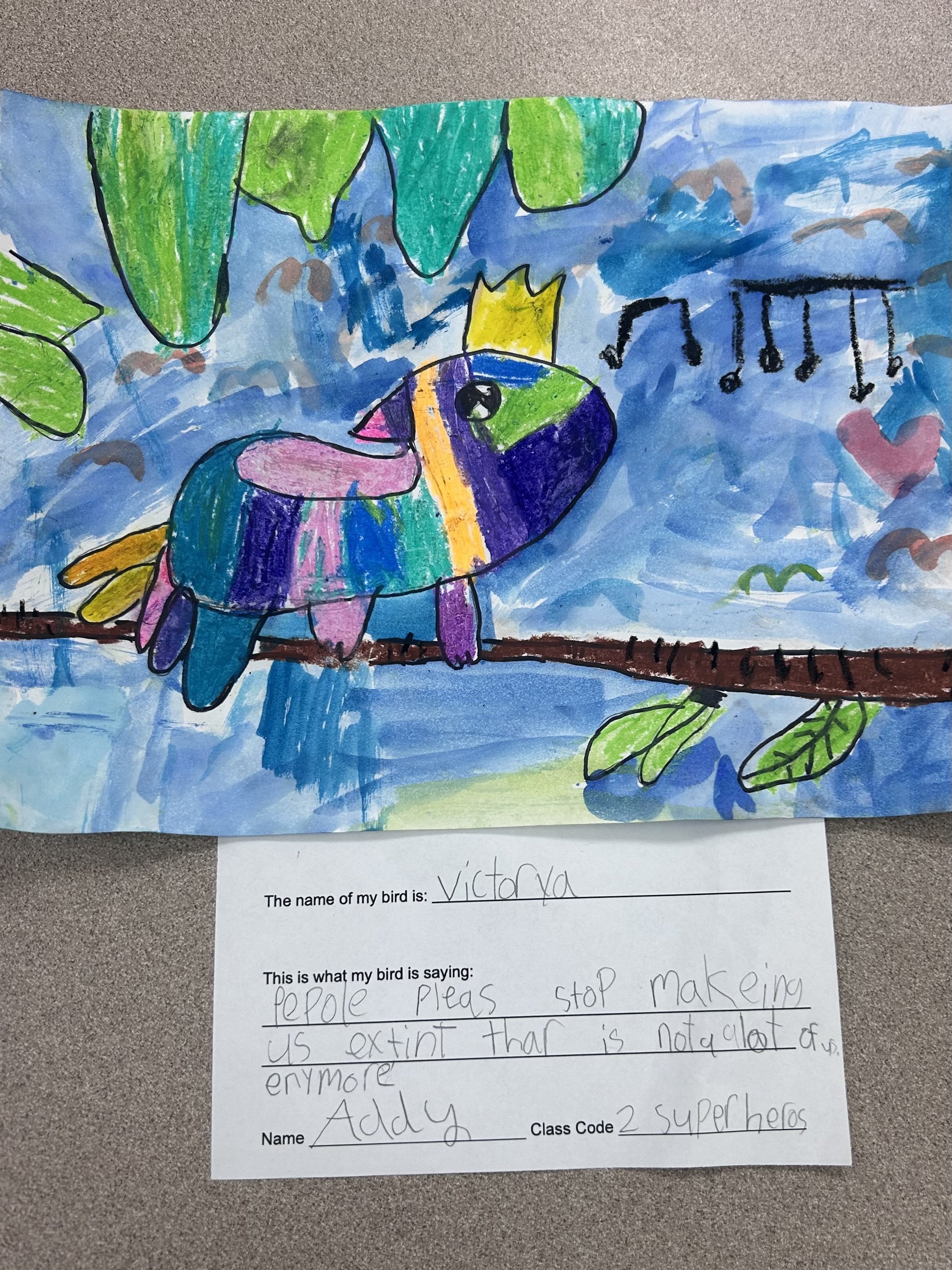Quality Standard 3: Teachers plan and deliver effective instruction and create an environment that facilitates learning for their students.
In my art lessons, I focus on creating a seamless connection between creativity and mindfulness, allowing students to engage deeply in the process and purpose of artmaking. For example, in my elementary classes, I developed warm-ups centered around breathing exercises inspired by animals (e.g., imagining slow turtle breaths or fast rabbit breaths). These activities help students regulate their nervous systems and transition into a calm, focused mindset before creating art. Building on this mindfulness, I introduce projects like straw-blown watercolor painting, where students use their breath to create abstract forms and later transform these into imaginative characters. This process deepens their technical skills and reinforces the idea that art reflects their internal world, making the classroom a space for self-expression and emotional growth. As Paulo Freire said, “Education must begin with the solution of the teacher-student contradiction, by reconciling the poles of the contradiction so that both are simultaneously teachers and students.” This insight resonates with my practice, as I see art as a shared journey of discovery where students and teachers learn together. Mindfulness exercises and creative exploration serve as the bridge to this dynamic, reciprocal learning.
Incorporating social awareness into my high school art lessons has also been a significant focus. One standout project involved using expired rice and lentils to create mandalas while addressing the issue of food waste in schools and communities. Students explored the environmental and ethical implications of food waste through group discussions and collaborative artmaking. This hands-on, interdisciplinary approach allowed them to connect art with real-world challenges, fostering critical thinking and empathy. In today’s distracted world, the need for effective instruction is more pressing than ever. Careful planning allows me to create lessons that anchor students in meaningful experiences while challenging them to think critically about the world they inhabit. By embedding these elements into my teaching, I strive to create lessons that are not just engaging but transformative, equipping students with the skills and perspectives needed to become thoughtful, responsible global citizens.
· Element A: Teachers demonstrate knowledge about how learning takes place,
including the levels of intellectual, physical, social, and emotional development of their students.
One of the first projects I introduced in my Drawing 1 class acknowledged that high schoolers often struggle with social interaction. Students created name tents featuring their name, two interests, and a favorite quote, which they shared with their peers. This activity fostered connection and allowed me to learn about each student individually. I later used these name tents to implement seating rotations, encouraging students to interact with a wider range of classmates. Through this project, I was able to assess students’ social and emotional development, helping me better understand how to meet their intellectual and creative needs. John Dewey reminds us, "Education is not preparation for life; education is life itself." This project exemplifies this ethos, as it served not only as an icebreaker but also as a window into my students’ unique personalities and needs.
Emotional intelligence is something I deeply value in my teaching practice. I strive to contextualize the knowledge I share to align with the intellectual, physical, social, and emotional needs of my students. By understanding their socio-economic backgrounds, emotional states, and intellectual capacities through open but non-intrusive conversations, I scaffold lessons to be inclusive and impactful. Group discussions and regular art critiques help enhance students’ social skills, while individualized encouragement and constructive feedback foster artistic confidence. This holistic approach ensures that my classroom is a space where every student can thrive.
· Element B: Teachers use formal and informal methods to assess student learning, provide feedback,
and use results to inform planning and instruction.
I strongly believe that assessments are not just tools for assigning grades but opportunities for teachers to refine their instruction and encourage students’ growth. Art, being inherently subjective, requires creative and non-traditional methods of assessment. One approach I used in a project addressing food waste involved conducting verbal surveys to identify pressing issues in the school. Students overwhelmingly identified food waste as a concern, and I used this data to design a lesson that resonated with their shared priorities. Once the project concluded, I introduced rubrics for self-assessment, a method I learned from my art education professor. As author and educator Peter London writes, "Art assessment is a way of understanding, not judging, the student's journey." Self-assessment empowers students to reflect on their growth and take ownership of their learning process, fostering a sense of accountability and pride in their achievements.
·
Element C: Teachers integrate and utilize appropriate available technology to engage students in
authentic learning experiences.
In an elementary classroom where little emphasis was placed on sound, I explored ways to integrate auditory experiences to enhance creativity. Inspired by Henri Rousseau’s jungle scenes, I played jungle bird sounds from Spotify during a lesson on creating jungle birds. These sounds captivated the students’ imaginations, transforming the classroom into a vibrant jungle. As they painted, the bird sounds also served as a classroom management tool, encouraging students to listen closely and interpret what the birds were "saying." This imaginative exercise became the foundation for their artist statements. "Music and sound," as artist Wassily Kandinsky believed, "are the soul of the abstract." Harnessing the power of sound in the classroom not only sparks creativity but also fosters a deeper connection between the students and their work. I plan to continue exploring sound’s potential as a catalyst for authentic artistic expression.
· Element D: Teachers establish and communicate high expectations and use processes to support the
development of critical -thinking and problem-solving skills.
In the age of machine learning, developing critical thinking and problem-solving skills is essential. Art uniquely fosters these abilities by encouraging students to question, explore, and reflect. For instance, while introducing the concept of lines in my Drawing 1 class at high school, I posed a question about lines and their symbolic and practical roles beyond the 2D plane. We discussed how lines not only structure our drawings but also serve to divide and unite humans in various aspects of life. This engaging conversation began with the critical thinking question: What do lines do?
To enrich this exploration, we referenced the ideas of Paul Klee, who famously said, "A line is a dot that went for a walk." This whimsical yet profound reflection invites students to imagine lines as dynamic forces capable of storytelling and connection, both on paper and in the world.
Similarly, when teaching Kandinsky to elementary students, I emphasized how lines and shapes can be inspired by music and emotions. Kandinsky believed that visual elements carry vibrations that resonate with human feelings. He eloquently wrote, "Color is the keyboard, the eyes are the harmonies, the soul is the piano with many strings. The artist is the hand that plays, touching one key or another, to cause vibrations in the soul." By introducing students to this philosophy, I encouraged them to reflect on how lines represent energy, emotion, and discipline beyond the visual plane.
Through these discussions, students learn to see foundational artistic concepts as metaphors for real-world problem-solving, equipping them with creativity and analytical insight for a complex, interconnected world.
· Element E: Teachers provide students with opportunities to work in teams and develop leadership.
In an individualistic society, the value of teamwork and leadership cannot be overstated. I am committed to designing art projects that emphasize collaboration and shared responsibility. During a high school lesson on food waste, I divided students into teams, assigning roles such as scribe, designer, and implementer to ensure equitable participation. These roles encouraged accountability while fostering teamwork and leadership skills. As educator Helen Keller observed, "Alone we can do so little; together we can do so much." Through structured group projects, I aim to teach students not only the importance of collaboration but also the value of diverse perspectives, preparing them for success in both their personal and professional lives.
· Element F: Teachers model and promote effective communication.
Art is a way of expressing what words often can’t, yet we live in a world that asks us to explain even the most creative things in words. Ian McGilchrist beautifully captures this idea: “Art reveals the world in ways that language cannot — it is a form of knowing that is felt and intuitive.” Inspired by this, I’ve worked to turn artist statements into something more meaningful and fun. I was deeply discouraged that first graders had to write artist statements, but I decided to take up the challenge to make it fun for them. During our bird project, I played bird songs and asked the students, “What is your bird saying?” as their statement. Their excitement was contagious as they shared stories, giving their artwork a voice.
By approaching communication this way, I’m teaching students that expressing their ideas doesn’t have to follow strict rules — it can be creative and personal, just like their art. In the future, I’d love to see high school students write poetry to pair with their work, turning artist statements into something poetic and unique.
In these small ways, I aim to show students that communication, like art, is about connecting with others and sharing their ideas in ways that feel natural and inspiring.








